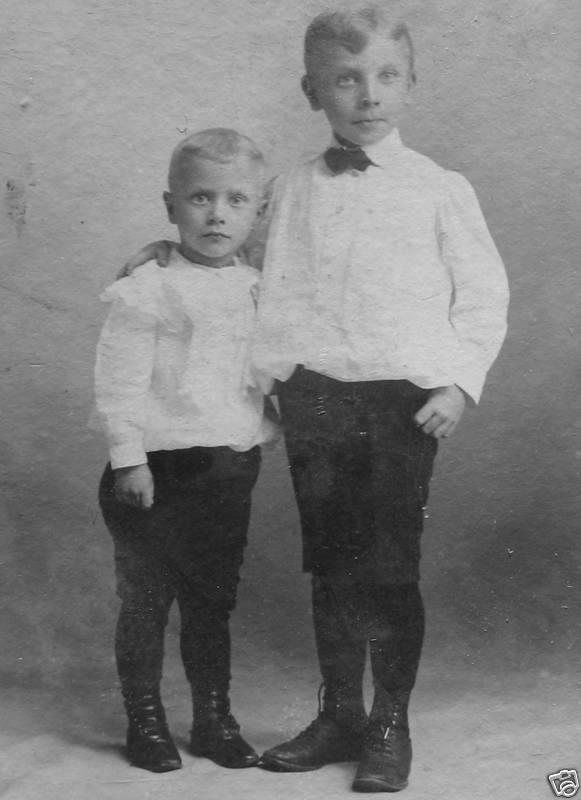
Figure 1.--Shirt-like garments in the late-19th century were done with long sleeves. This only begun to change in the early-19th century. Even so until after World War I in the 1920s, most boys wore long sleeves in both the winter and summer. |

|
The second major element of a shirt after the collar is the sleeves. There are various aspects to the sleeves, including the length, width and cuffs. The most important is the length. Sleeves were done in both long and short lengths as well as an intermidiary length elbow length. We are just beginning to develop information on sleeves. We only have a preliminary assessment at this time. Early shirts had long sleeves. The only exception was early blouses. Here the blouses for younger boys followed the designs of children's dresses which could be made with short sleeves. A good example is two unidentfied siblings in the late-1850s. The boys We see these short sleeved blouses in the 1840s and 50s, but blouuse fo schoola ge boys were dione with ling sleeves. We have far graeter coverage in the 1860s becauuse of the opularity of the CDV. And boys except the very youngest always wire long sleeve blouses or long sleeve shirts when they appeared. This followed trends for men whoonly wore long sleeves. We continue to see for both shirts and blouses (1870s) and the rest of the century. We firsr notice short-sleeved blouses and shirts well kinto the 20th cebntyury. They were the sailor blouses done with open square collars. We notice a few short-sleeve shirts in the 1910s, but they only began to be common in the 1920s as boys made the transition from blouses to shirts. While length is the most noticaeable features of sleeves, there are other features. We also notice differnt fits, both tight fitting and much wider. Blouses might have balloon sleeves at the shoulder. We also notice very voluminous sleees further down the sleeve. These were popular in the mid-19th century. Sleeves wee also done with and without cuffs.
The most important blouse and shirt feature after the collar is the length. Sleeves were done in both long and short lengths as well as an intermidiary length elbow length. We are just beginning to develop information on sleeves. We only have a preliminary assessment at this time. Early shirts had long sleeves. The only exception was early blouses. Here the blouses for younger boys followed the designs of children's dresses which could be made with short sleeves. A good example is two unidentfied siblings in the late-1850s. The boys We see these short sleeved blouses in the 1840s and 50s, but blouuse fo schoola ge boys were dione with ling sleeves. We have far graeter coverage in the 1860s becauuse of the opularity of the CDV. And boys except the very youngest always wore long sleeve blouses or long sleeve shirts when they appeared. This followed trends for men whoonly wire long sleeves. We continue to see for both shirts and blouses (1870s) and the rest of the century. We firsr notice short-sleeved blouses and shirts well kinto the 20th cebntyury. They were the sailor blouses done with open square collars. Short-sleeve shirts seem to haveappeared (1920s). We can not rule out that their may have been some appearing uin the late-1910s. But short sleeves only began to be common in the 1920s as boys made the transition from blouses to shirts. While length is the most noticaeable features of sleeves, there are other features.
We also notice differnt fits, both tight fitting and much wider. We also notice very voluminous sleees further down the sleeve. These were popular in the mid-19th century.
Blouses might have balloon sleeves at the shoulder. This was mostly for very young boys.
Sleeves were also done with and without cuffs.
Navigate the Historic Boys' Clothing Web dress pages:
[Return to the Main U.S. shirt and collar style page]
[Return to the Main collar style page]
[Return to the Main shirts page]
[Return to the Main U.S. garment page]
[Eton collars]
[Peter Pan collars]
[Floppy bows]
[Double-breasted styling]
[Hair styles]
Navigate the Boys' Historical Clothing Web Site:
[Introduction]
[Activities]
[Biographies]
[Chronology]
[Clothing styles]
[Countries]
[Bibliographies]
[Contributions]
[Essays]
[FAQs]
[Glossaries]
[Images]
[Links]
[Registration]
[Tools]
[Boys' Clothing Home]
